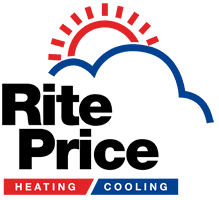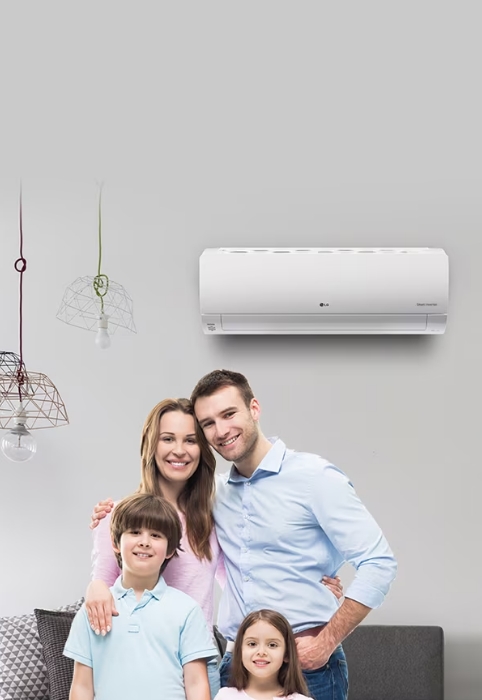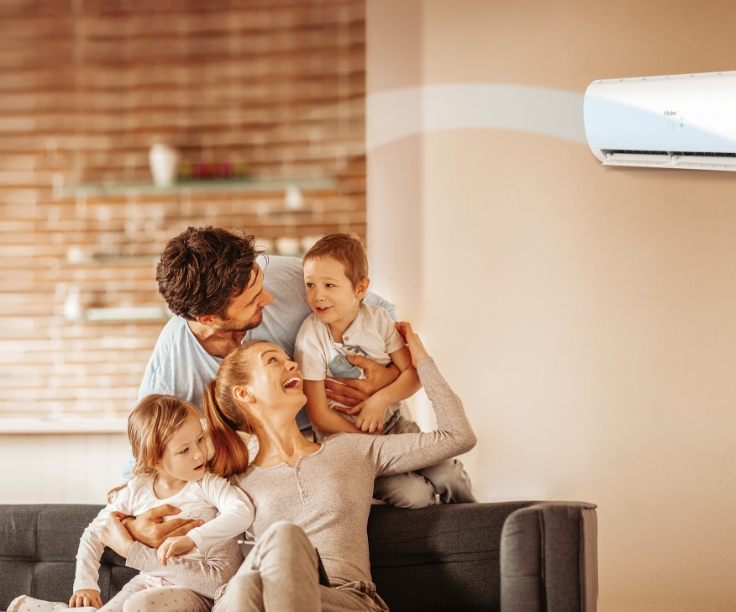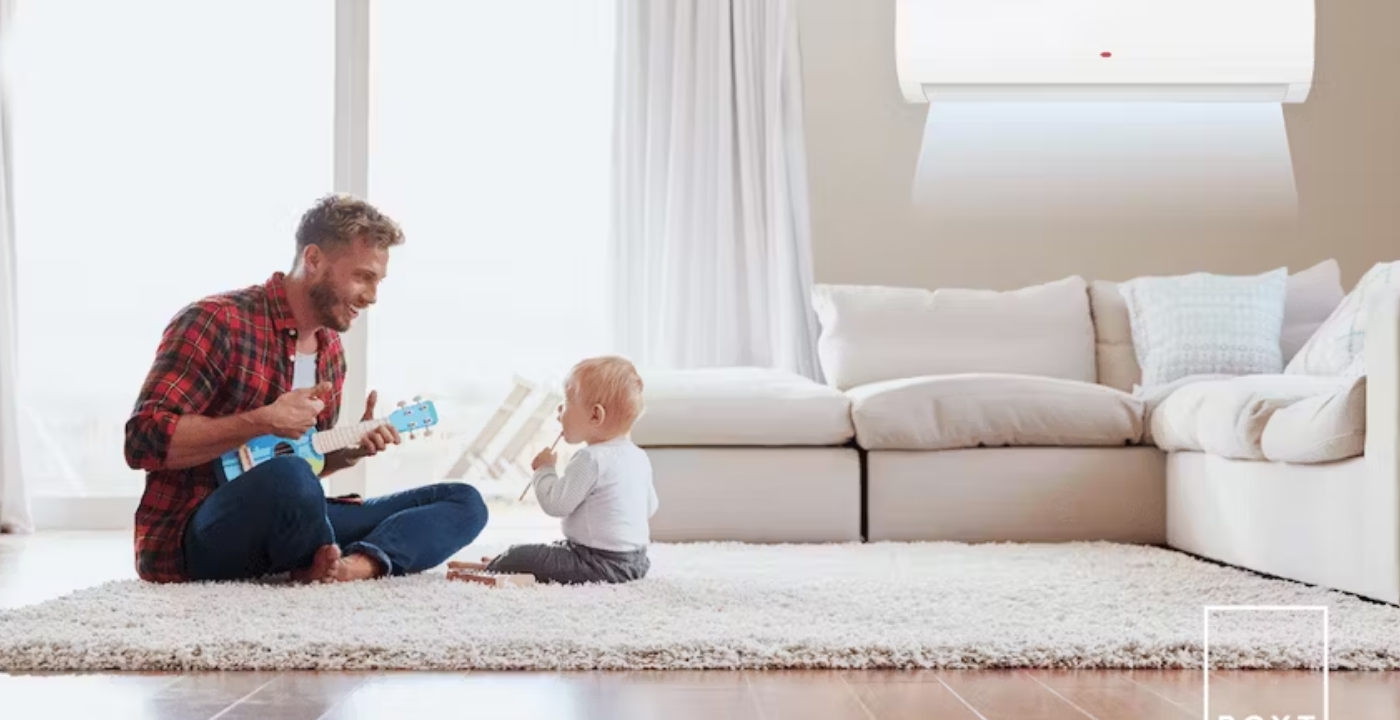4 Ways You Can Customise Your Air Conditioning System to Make Sure It’s Right for You
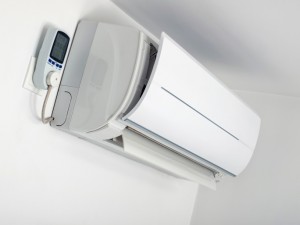
Less Is More: The Ductless Way
The ductless system (sometimes referred to as a mini-head or single split) is the perfect option if you have a heavily glassed-in sunroom or simply don’t have walls that can accommodate duct work. A ductless system is made possible because of a variable-speed inverter that allows units to operate more quietly and far more efficiently (even more efficiently than central air). When it’s mounted high up on a wall, the unit is unobtrusive and placed perfectly to distribute cool air evenly throughout the room. These systems can be used in conjunction with traditional central air. You may also be able to connect up to four indoor units for maximum efficiency.
Custom Air Conditioning System for Allergies
If you have a person with allergies living in your home or you own pets, you might want to consider having a whole-home air filtration system installed. Some units offer the benefits of bipolar ionization, which can spread ionized oxygen clusters that attach to airborne allergens, such as mould, pollen, and odours. After the clusters attach, they form heavy organic compounds that simply drop out of the air before you have a chance to breathe them in.
An Inverter or Digital System
Because of advancements in technology, these systems can provide uninterrupted service with significant energy savings. Instead of conventional methods of cooling, a digital system gently increases or decreases the power required to get to the target temperature. There is a reduction in the serious spikes in power usage, which makes these systems an affordable choice for homeowners.
Upgrade Your Furnace to Keep Pace With Air Conditioning
Since your furnace and air conditioning have many components that work together in order to circulate air and provide year-round comfort, consider updating your furnace. It may be advisable to have your custom air conditioning specialist counsel you on the best furnace options for your total yearly needs. The efficiency of your furnace is tested when air circulates and when humidity is balanced. You can see how cooling and heating systems are evenly matched in terms of dealing with the air in your home.
With all the options available, be sure to ask questions of your installation expert so they know your key concerns before purchasing a system. While some elements (like ductless systems) can be added on at a later date, other options need to be chosen well in advance of installation. It’s always best to know what you want before you make a major home purchase, so consider all your options wisely.
How Much Wattage Does My Air Conditioning Use?
During the cooling season, your air conditioning unit accounts for a big chunk of your monthly utility bills. The amount of power it consumes, though, depends on a wide range of factors. Insulation, sizing and maintenance all play a role in determining how much wattage your air conditioning uses and understanding that power consumption is the first step toward maximizing your air conditioning system’s energy efficiency. As a general reference point, a 3 tonne central air conditioning uses around 3500 watts per hour and a 12,000 BTU window unit uses about 1200 watts per hour.
How Air conditioning Work
From budget models up to high-end units with Energy Star ratings, every modern air conditioning depends on the same cooling cycle. At the evaporator coil, a chemical called a refrigerant absorbs heat from the indoor air and evaporates, becoming a gas. The air conditioning then pumps the gaseous refrigerant to the condenser coil, where a special pump called a compressor forces it to return to liquid form. In the process, the refrigerant releases that heat outside the home, then returns to the evaporator coil to repeat the cycle.
Since air conditioning s do not consume refrigerant, or indeed any other kind of fuel, this process requires plenty of electricity to keep running. The more space the unit has to cool, the more power it will consume to do so.
Efficiency Ratings
An air conditioning ‘s cooling efficiency is usually measured as its seasonal energy efficiency ratio (SEER). SEER is computed as the air conditioning ‘s cooling output in British thermal units (BTU) divided by its power consumption in watts. SEER values typically range from 10 to 20, with higher ratings denoting more efficient power consumption. To qualify for Energy Star ratings, an air conditioning must have an SEER of at least 14.
While manufacturers publish a nominal SEER for each model, the effective SEER depends heavily on environmental factors. In homes with different layouts, insulation and load-generating appliances, the same unit may operate at a higher or lower effective SEER. Thus, the SEER your air conditioning company gives you during the installation process may differ somewhat from the nominal SEER given by the manufacturer.
Set Up for Efficiency: Proper Sizing of the Air conditioning
The old adage that bigger is not always better certainly holds true in the world of air conditioning. An air conditioning that is too big for your home will constantly cycle on and off, which not only impacts energy efficiency but also leads to uncomfortable temperature changes. Of course, getting an air conditioning that has too little cooling power is even worse because our unit will have to work very hard to keep your home cool and will accumulate plenty of wear and tear in the process. To cool your home efficiently, you need a properly sized air conditioning .
Because every home is unique, every installation project should begin with a full, professional load calculation. Your home’s cooling load depends on a number of factors, including square footage, layout, insulation and load-generating appliances. By taking all of those factors into account, your air conditioning professional can determine exactly how much cooling power you need to maintain a comfortable temperature and recommend a properly sized system to meet those cooling needs. Never just assume that the size of your existing system is correct since sometimes the old load calculation may have been wrong or changing home circumstances may have rendered it obsolete.
Keeping Efficiency Under Control
One of the simplest yet most powerful steps you can take to keep your air conditioning systems running efficiently is to properly manipulate your thermostat. Most people can stay comfortable at temperatures between 24 and 26 degrees, so find the warmest temperature that does not bother you and set your thermostat there. Remember, every degree changes your air conditioning ‘s power consumption by about 7 percent, so it really pays to set the thermostat as high as you can.
Many homeowners make the mistake of temporarily setting their thermostats below their target temperature in hopes of cooling their homes down more quickly. In reality, this causes the air conditioning unit to overshoot the target temperature, wasting energy in the process. Once you have a target temperature in mind, stick with it. Setting the thermostat lower will not make your air conditioning cool your home more effectively.
For homeowners who really want to minimise their energy costs, the air conditioning industry offers a wide range of precision control devices. A programmable thermostat, for instance, can be set to automatically turn your air conditioning off while the home is empty and turn it back on when you come home from work. Even more advanced thermostats can divide your home into cooling zones, allowing you to shut off the air conditioning in an unused room or turn it up a little in a part of the house that is always warmer than the rest. Some thermostats even offer remote control options, giving you total control over your air conditioning system even when you are not at home.
Ceiling Fans: Efficiency Helpers
While many homeowners falsely view air conditioning s as replacements for ceiling fans, the two devices are in fact complementary. A good ceiling fan helps your air conditioning s run more efficiently by improving air circulation throughout the room, constantly removing cold air from the area around the unit and replacing it with hot air that collects near the ceiling. Furthermore, ceilings create an artificial “wind chill” effect that makes the air feel cooler on residents’ skin. With a fan running, you can set your thermostat a degree or two higher without noticing a difference in comfort.
Ceiling fans with Energy Star ratings are designed inside and out with energy efficiency in mind, so investing in one can really work to reduce your air conditioning system’s energy consumption. Remember that many fans have a reverse setting to help your heating equipment run more efficiently, too.
Energy-Efficient Upgrades
One of the biggest investments you can make in the future of your home is a more efficient air conditioning . By replacing your old unit with a new model whose SEER is higher, you can substantially reduce your monthly utility bills and enjoy the benefits of more effective cooling. Upgrading from a 10 SEER unit to a 20 SEER can cut your energy costs by as much as 50 percent during the cooling season. Even a more modest upgrade from 12 SEER to 16 SEER reduces your cooling costs by about 25 percent, which can save hundreds of dollars over the course of a year.
To help you make the most financially sound decision, your air conditioning professional may carry out a payback analysis. This calculation divides the cost of purchasing and installing a new system by the monthly utility savings to determine how long it will take for the new system to effectively pay for itself. Using this analysis, many homeowners find that the upgrade to a more efficient air conditioning will pay for itself in just a few years.
Preserving Efficiency: Maintenance and Repair
Even the best air conditioning s are prone to minor maintenance issues and those problems have the potential to seriously impact power consumption. The modern air conditioning is deceptively self-sufficient: it can run for a long time without being serviced, but problems hidden just below the surface cause utility bills to rise and can lead to more expensive issues down the road. On the other hand, a well-maintained air conditioning is an efficient machine that will keep cooling effectively for years to come.
One of the simplest ways to keep an air conditioning running efficiently is to frequently change the air filter. Over time, air filters can become clogged with dust and debris, preventing air from easily leaving the unit. This forces the machine to work harder and can lead to maintenance issues such as freezing. As a rule, basic filters should be replaced on a monthly basis, while advanced filters should be changed every three months or so. The actual timing may vary depending on smoking, pets and general home cleanliness.
When replacing a disposable air filter, be sure to get a replacement from a factory authorised dealer instead of buying a generic model from a hardware store since using a filter designed to fit your air conditioning will make it run more efficiently. If your air conditioning has a reusable filter, wash it thoroughly with cold water and let it air dry completely before putting it back in the unit.
Good home maintenance goes a long way, but if you really want to help your air conditioning maintain maximum efficiency, consider investing in a yearly service agreement. Your air conditioning professional will come to your home and make the small calibration adjustments your air conditioning needs to cool your home as efficiently as possible. In addition, your technician will diagnose and repair small, hidden issues that could be wasting power. Thus, a service agreement saves you money on your utility bills now and on expensive repairs in the future. With some help from an air conditioning professional, your air conditioning will use as little wattage as possible to cool your home.
Our network of expert air conditioning professional at Rite Price Heating & Cooling have all the information you need to answer your air conditioning questions. Please contact us in your local area for the best customer service, information and advice regarding air conditioning products.
